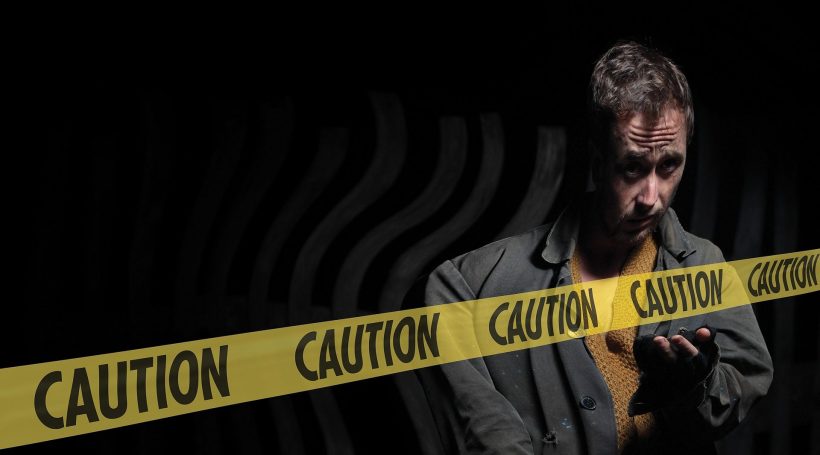It was a routine call that could have turned deadly. Camden County Metro Police Lieutenant Gabriel Rodriquez was responding to a call of a suspicious person. He arrived to the Camden street corner to find a schizophrenic man surrounded by police officers. The man believed everyone there was about to attack him.
“I backed the officers away and started talking to him,” Rodriquez says. “He was off his medication and really believed everyone was the enemy.”

Lieutenant Gabriel Rodriquez
“I wanted to have him make all the decisions. How could I get him out of this area? Did he want to go to the hospital? He was really receptive, and he complied. He was still talking to himself, but I was able to get him into my car and to the hospital for treatment.”
Rodriquez knew how to best handle the volatile situation because of specialized training he received last year. Specialists from Oaks Integrated Care trained nearly 300 members of the county police department in a new program called Colliding Systems: Mental Health and Law Enforcement.
While Rodriquez was skeptical of the training at first, he now understands its value. “If it wasn’t for the training,” he says, “I would have been a threat rather than the solution on that street corner.”
One out of four adults are diagnosed with a mental illness, and 20 to 40 percent of all people with a mental illness will be arrested at some point, says Erin Swinney, intensive outpatient treatment and support services program supervisor at Oaks Integrated Care. In many cases, police are dealing with people in psychiatric distress who can’t function normally. The training program taught officers how to recognize when a person has a mental illness and how best to respond.
“In the past, we just wanted to get the person in handcuffs, secured and out of there fast,” Rodriquez says. “After you receive this training, you understand that your ultimate goal is not to get them in cuffs, it’s to get them the medical attention they need badly. The last thing on your mind is to place them under arrest, because that doesn’t help at all. That’s the last resort.”
The program taught officers to assess for mental illness on every call, no matter the initial reason for the call. “Is the person disheveled?” says Swinney. “Does it seem like they haven’t eaten in a while? Are they dressed appropriately for the weather? Is their home filled with a lot of stuff – are they hoarding? These can be indicators that a psychiatric event is occurring.”
Officers were taught if they suspect mental illness, they should try to reduce any external stimuli. “They should give short directions and a lot of explanation of what the next steps are,” Swinney says. Simple actions like turning off the lights on their patrol car or turning down the volume on the walkie-talkie could help.
Rodriguez says he has become better at observing a person’s body language. “We deal with people who are using hallucinogens and will strip their clothes off or sweat or are breathing heavy,” he says. “When it seems like they are talking to themselves or they’re telling the voices in their head to stop – those are the signs we look for.”
The officers were also given a list of resources to pass on to people in crisis, including the 24-hour crisis helpline, 428-HELP. And since the officers are placed in such critical, stressful situations, the training program included tips for them to avoid burnout.
“If you got a call to deal with a disturbance and the person won’t sit still or can’t answer your questions because they are experiencing symptoms,” says Swinney, “it can become frustrating, because the officer is trying to get a job done.” She suggests officers have a trauma buddy, someone to talk to who will understand the difficulties and share the burden.
For Sergeant Raphael Thornton, the new training has helped him diffuse situations he says could have easily turned deadly.
“I’ve been a cop for 20 years, and we deal with incidents like this all the time,” Thornton says. “The training gave me different avenues and resources to help people.”
Thornton describes a brisk, sunny afternoon when he arrived at a call to find a 6-foot man standing barefoot in the middle of Baird Blvd. The man was behaving erratically and did not respond to officers’ requests for him to come to the sidewalk.
“He was off his meds,” Thornton says. “He was fighting. Another officer tried to take him with force, and I stopped him. I asked the man what he needed, and he said he wanted to go home. So I asked him if he would walk with me.”
Thornton and the man walked for much of the afternoon, with Thornton making sure no one approached them. Eventually, the man felt tired, so he sat down and asked for water. Thornton was then able to get him help.
“If we had used force, he would have fought every last one of us, and we would have hurt him. But we exercised patience and used the least amount of force,” Thornton says. “I went there wanting to protect his life and those around him – not take him into custody. I wanted to help without using physical force.”
“The training teaches you that all life matters. Even if you commit a crime, you’re still a human,” adds Thornton. “All people have one thing in common: their life has value. This training taught us that as police officers, we need to go on calls having patience and the right mindset.”












